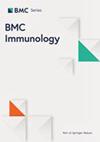组蛋白乙酰化风险模型可预测预后并指导胶质母细胞瘤的治疗选择:对化疗和抗CTLA-4免疫疗法的影响
IF 2.9
4区 医学
Q3 IMMUNOLOGY
引用次数: 0
摘要
胶质母细胞瘤的特点是侵袭性强、复发率高、预后差。组蛋白乙酰化相关基因与胶质母细胞瘤的发生和发展有关,但它们对胶质母细胞瘤预后的预测能力仍不明确。本研究利用 Cox 和 LASSO 回归分析构建了组蛋白乙酰化风险模型,以评估胶质母细胞瘤的预后。我们通过单变量和多变量 Cox 回归分析评估了该模型的预后能力。此外,我们还利用ESTIMATE和TIMER算法评估了免疫浸润,并利用SubMAP算法预测了对CTLA4抑制剂的反应。应用多种药物数据库评估了高风险组和低风险组的药物敏感性。我们的研究结果表明,组蛋白乙酰化风险模型在预测预后方面是独立而可靠的。低危患者的免疫活性更高,总生存期更长,这表明抗CTLA4免疫疗法是合适的,而高危患者则可能从化疗中获益更多。该模型可指导胶质母细胞瘤患者的个性化治疗选择。本文章由计算机程序翻译,如有差异,请以英文原文为准。
Histone acetylation risk model predicts prognosis and guides therapy selection in glioblastoma: implications for chemotherapy and anti-CTLA-4 immunotherapy
Glioblastoma is characterized by high aggressiveness, frequent recurrence, and poor prognosis. Histone acetylation-associated genes have been implicated in its occurrence and development, yet their predictive ability in glioblastoma prognosis remains unclear. This study constructs a histone acetylation risk model using Cox and LASSO regression analyses to evaluate glioblastoma prognosis. We assessed the model’s prognostic ability with univariate and multivariate Cox regression analyses. Additionally, immune infiltration was evaluated using ESTIMATE and TIMER algorithms, and the SubMAP algorithm was utilized to predict responses to CTLA4 inhibitor. Multiple drug databases were applied to assess drug sensitivity in high- and low-risk groups. Our results indicate that the histone acetylation risk model is independent and reliable in predicting prognosis. Low-risk patients showed higher immune activity and longer overall survival, suggesting anti-CTLA4 immunotherapy suitability, while high-risk patients might benefit more from chemotherapy. This model could guide personalized therapy selection for glioblastoma patients.
求助全文
通过发布文献求助,成功后即可免费获取论文全文。
去求助
来源期刊

BMC Immunology
医学-免疫学
CiteScore
5.50
自引率
0.00%
发文量
54
审稿时长
1 months
期刊介绍:
BMC Immunology is an open access journal publishing original peer-reviewed research articles in molecular, cellular, tissue-level, organismal, functional, and developmental aspects of the immune system as well as clinical studies and animal models of human diseases.
 求助内容:
求助内容: 应助结果提醒方式:
应助结果提醒方式:


